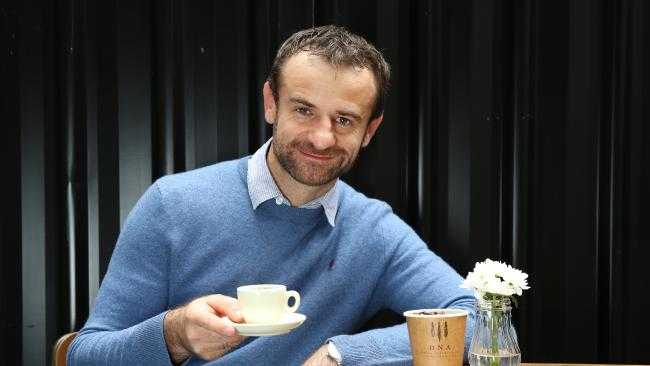How did you start in the coffee world?
When I decided to retire from elite sport in 2003 I completed an Advanced Diploma in Hospitality Operations. I then I worked in the industry in numerous establishments: clubs, fine dining restaurants and functions and eventually I got job as barista at a local bakery. I fell in love in making coffees so decided to pursue that as a career.
How has it changed since you started?
We called cappuccinos mountain-chinos because it was served with a tower of froth, which gave the coffee that wow factor. We didn’t have single origin coffee, only blends from big Italian brands and most of the roasting houses didn’t want to share their recipes. Producers sold their coffee to exporters for a fixed price regardless of quality so there was no incentive to improve their product. Roasters over-roasted coffee and most of the roasted beans came from Italy, packaged in containers and stored in warehouse for 3-4 months. Baristas used old technology, which revolutionised espresso at that time, but was limited in maintaining stable temperatures; we even used plastic tampers connected to coffee grinders.
How broad is the awareness of good coffee in Australia, given that the majority of coffee we drink is still instant.
Specialty coffee is still developing and the industry is young. Instant coffee is still the most consumed in the home because it is readily available, cheap to buy and quick to make. Therefore we still have to find an easy way to make a good coffee at home.
What types of coffee should you try to drink for different experiences?
Milk-based coffees are great breakfast, but filter coffees are also good. Coffee is complex and with twice the flavour complexity than wine so there are many ways to enjoy different coffee experiences.
How do you like to drink your own coffee?
I like to start the morning with an Espro or a pour over and after lunch, an espresso or long black. I also enjoy fruity milk-based coffees and I’ve been enjoying our new coffee blend called Raspberry Candy.
Tell us a bit about your work with winemaker Tim Kirk from Clonakilla inm Murrumbateman.
In 2014 I conducted many experiments on farms in Honduras where we looked at how soil, picking and fermentation affected the taste of coffee. We wanted to share this with our customers in Canberra so we hosted a dinner called “Coffee story through food and wine”. We compared how soil picking and fermentation affects coffee and wine and we matched that with the food in our café, The Cupping Room. We invited Tim Kirk to present the wine story and I presented the coffee story. I realised the similarities in the two beverages and this led me to visit Tim’s winery on several occasions. We shared information and I was inspired to use wine making techniques in the coffee industry.
What’s most excites you about the future of our coffee culture.
Farmers have just started experimenting with different varietals and new processing techniques. Now we have better coffee roasters and a lot more control of how we roast coffees, better coffee machines and grinders, our baristas are learning more and more every day. Our industry is progressing so quickly and we all do it to give our consumers a better experience with every cup of coffee.
Serbian-born Canberra-based Sasa Sestic is a former Olympic handball player who became Australia’s first World Barista Champion in 2015. The Coffee Man, a movie about Sestic’s journey, premieres on May 18, 2016. See tugg.com.au/thecoffeeman/ for screening details.


















